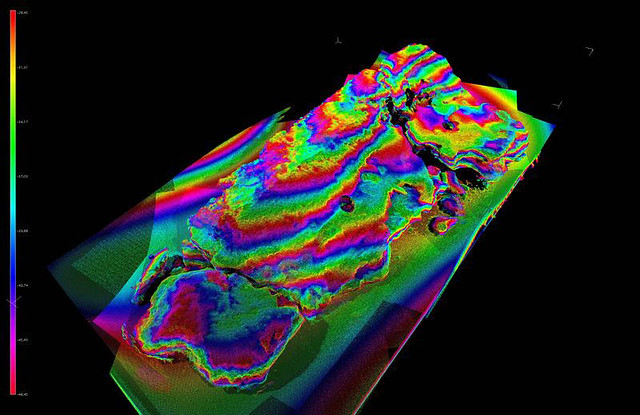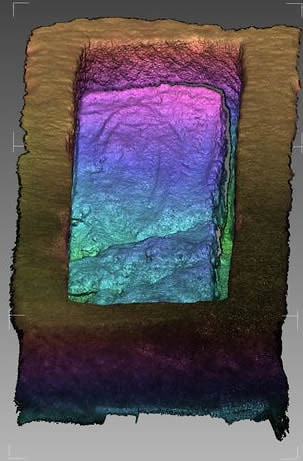 Mike Griffiths & Associates Ltd discovered a Roman burial sarcophagus and GSS/DJA were asked to provide a 3D laser scan record of it during investigation using the high resolution scanning equipment.
Mike Griffiths & Associates Ltd discovered a Roman burial sarcophagus and GSS/DJA were asked to provide a 3D laser scan record of it during investigation using the high resolution scanning equipment.
History
The Sarcophagus was discovered in the Mill Mount area of York and consisted of a stone trough weighing around three tons and a gritstone slab weighing at least another ton. An Army bomb disposal unit was called for assistance as they had fibre-optic endoscopy equipment that could see into the sarcophagus without removing the lid.
 After this inspection had taken place, and it was decided that nothing would be damaged by removing it, the lid was removed. Following our survey work, the developing story of the project shows that the sarcophagus is thought to be the last resting place of a young teenager from some 1800 years ago. Mike Griffiths and his team are continuing the investigation and further details on this interesting find can be found at:http://www.archaeologicalplanningconsultancy.co.uk/blog/
After this inspection had taken place, and it was decided that nothing would be damaged by removing it, the lid was removed. Following our survey work, the developing story of the project shows that the sarcophagus is thought to be the last resting place of a young teenager from some 1800 years ago. Mike Griffiths and his team are continuing the investigation and further details on this interesting find can be found at:http://www.archaeologicalplanningconsultancy.co.uk/blog/
Site Survey
 GSS/DJA were asked to scan the contents of the sarcophagus prior to investigation and then following excavation, further scans were carried out on the gypsum blocks found within, covering the skeletal remains. To carry out the survey, both the Faro LS880 and the Minolta VI910 were used. The Minolta is capable of capturing a very high density of points, whereas the Faro unit can capture a substantial amount of data in a far shorter span of time.
GSS/DJA were asked to scan the contents of the sarcophagus prior to investigation and then following excavation, further scans were carried out on the gypsum blocks found within, covering the skeletal remains. To carry out the survey, both the Faro LS880 and the Minolta VI910 were used. The Minolta is capable of capturing a very high density of points, whereas the Faro unit can capture a substantial amount of data in a far shorter span of time.
Processing
The data from the initial set of scans was compiled and presented as a 3D point cloud and surface model, showing the clear shapes visible in the top side of the gypsum and hinting at what could lay underneath. The second set of scans were of the underside of the gypsum , picking out the contours of the cavity where the body lay and recording the fragile surface.















